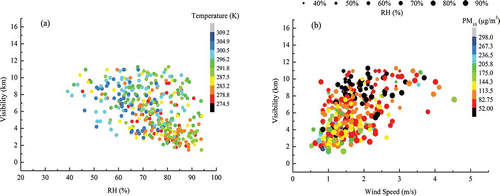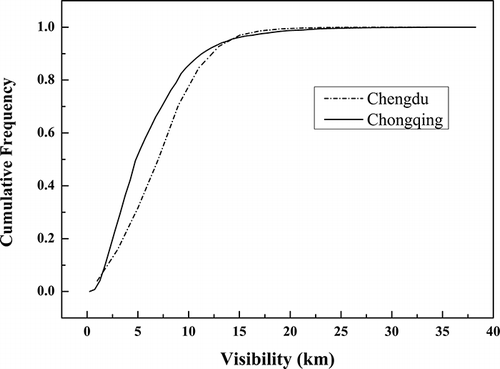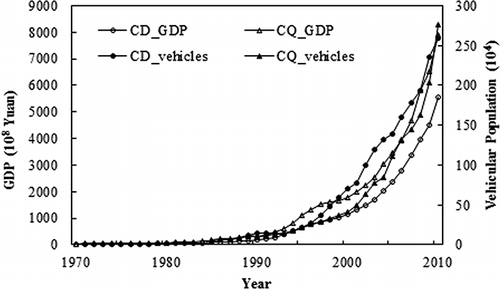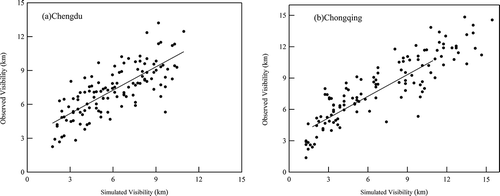Figures & data
Figure 1. (a) Spatial distribution of 30-yr average visibility in China (Sichuan and Chongqing are the regions within the gray lines). (b) Location and elevation of the Sichuan Basin, Chengdu and Chongqing (color figure available online).
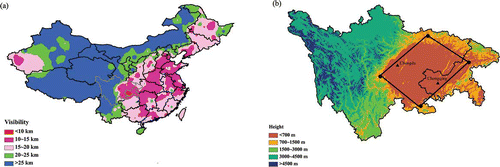
Table 1. Air quality category and the upper limit of daily average concentrations for each pollutant corresponding to different API classifications
Table 2a. Summary of visibility, meteorological factors, API, and PM10 pollution in Chengdu
Figure 3. Percentage occurrence of days with PM10 as the primary pollutant and trends of PM10 concentrations in Chengdu and Chongqing.
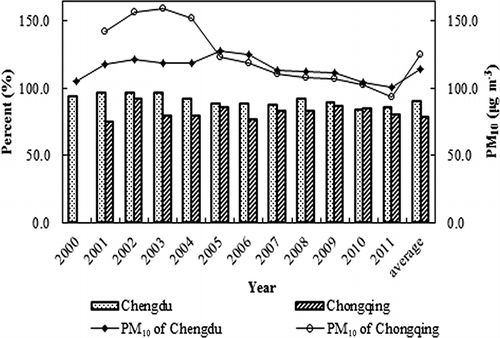
Figure 4. Monthly variations of visibility, PM10, and meteorological factors in Chengdu (a, b) and Chongqing (c, d).
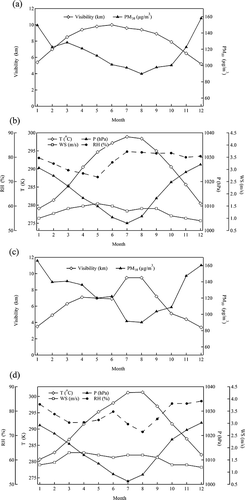
Figure 5. Trends of the 50th cumulative percentile of visibility and ridit values in (a) Chengdu and (b) Chongqing.
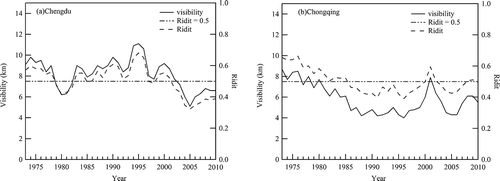
Figure 6. Days with visibility >19 km per year and days with visibility <10 km per year in Chengdu and Chongqing.
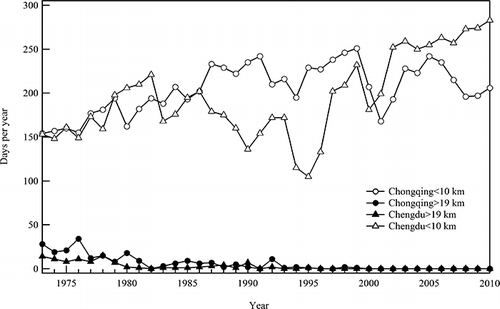
Figure 7. (a) Comparison of visibility between 1960s and 2000s in Chengdu and Chongqing. (b) Comparison of haze days between 1960s and 2000s in Chengdu and Chongqing.
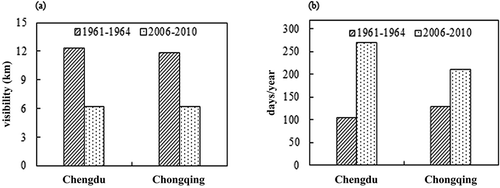
Table 2b. Summary of visibility, meteorological factors, API, and PM10 pollution in Chongqing
Figure 9. Scatter plots of visibility vs (a) RH and (b) wind speed in Chongqing (color figure available online).

Figure 10. Scatter plots of visibility vs (a) RH and (b) wind speed in Chengdu (color figure available online).
